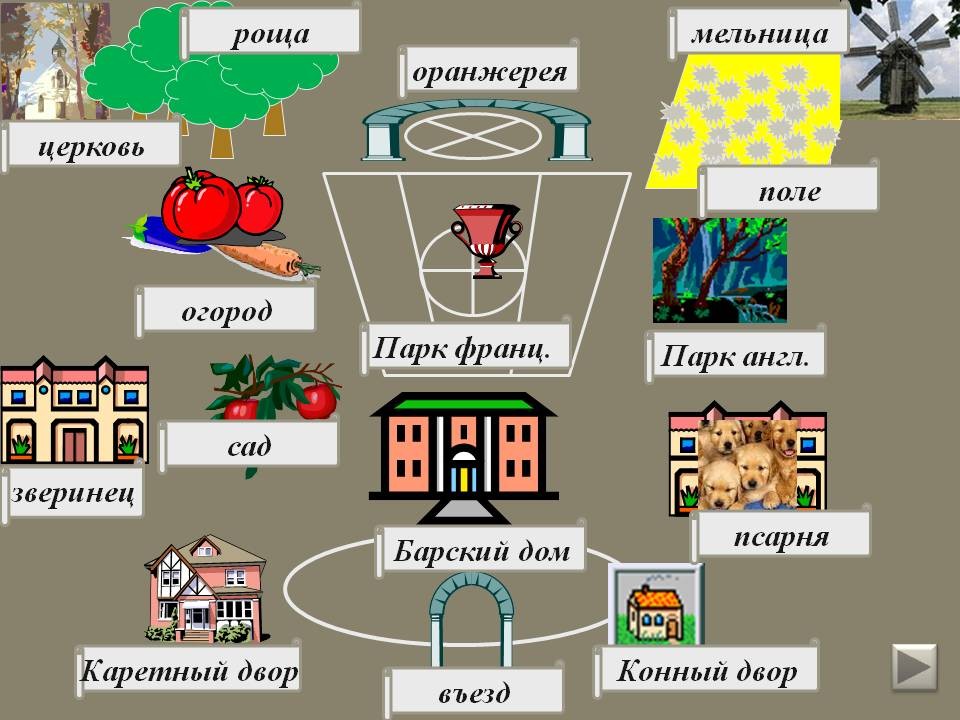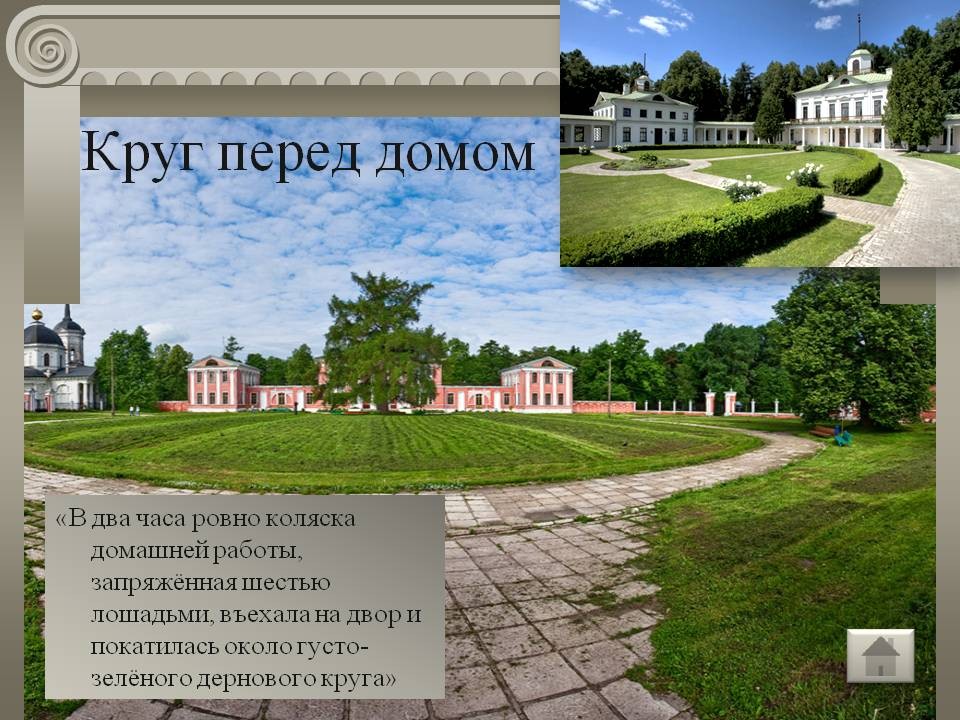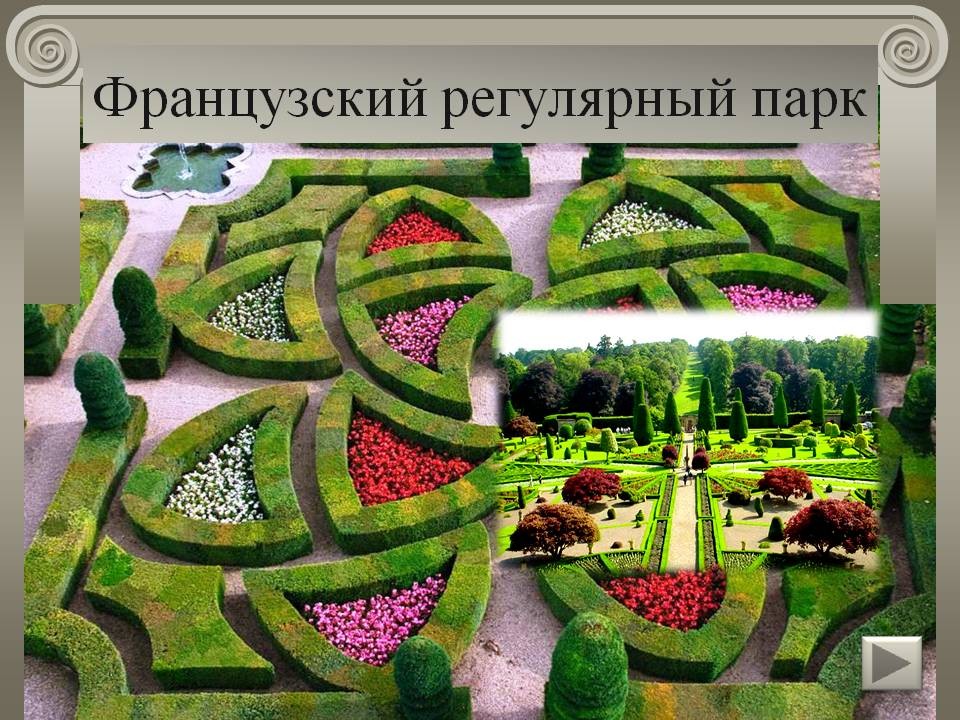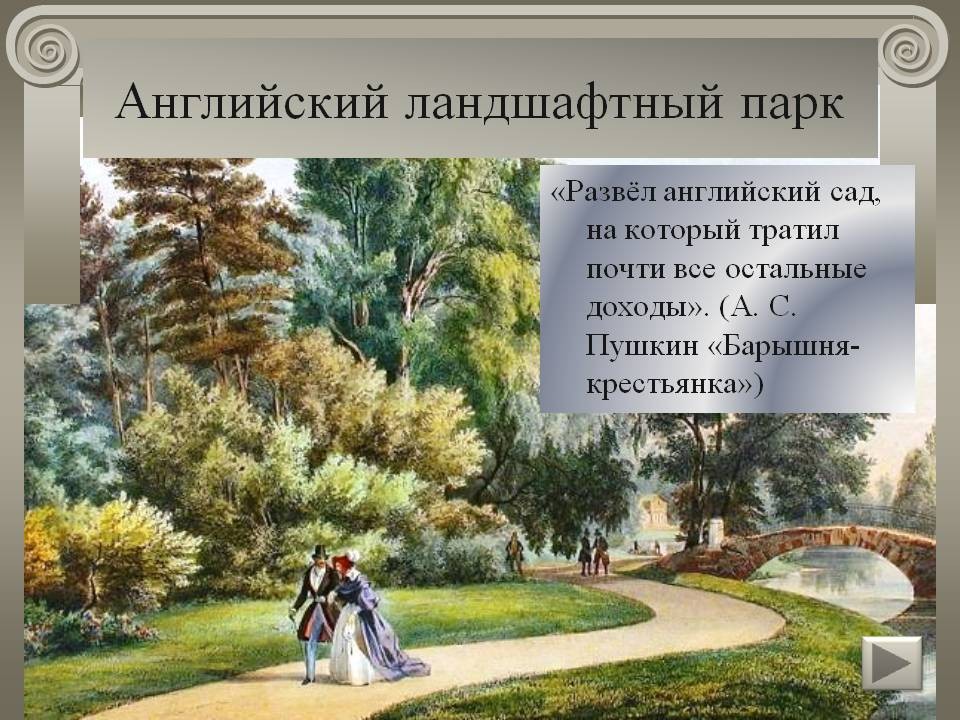It is difficult for us now to imagine what place the manor's estate occupied in the life of Russia and the nobles of the 18th and 19th centuries. This is a kind of world, which is of particular interest to penetrate, especially in connection with the study of the works of A. S. Pushkin.
His works such as "The Tales of the late I.P. Belkin", "Dubrovsky", the novel "Eugene Onegin", without an extensive everyday and cultural commentary, we, the people of the 21st century, cannot be understood. Today we will try to penetrate this peculiar and closed world.
1. EntryJust as a theater begins with a hanger, so the estate of a Russian landowner begins with the main entrance, which is a gate, next to which there was a gatekeeper's lodge. Behind the entrance, a "green circle" or an access alley leading to the house was opened
2. manor houseThe central place of the estate, of course, was occupied by the manor house, which we will get to know in detail today.
3. Carriage house (or barn)What estate is without a coach house or barn? After all, the landowners of that time moved in carriages, wagons, carts and other types of transportation. Naturally, they needed not only to be kept somewhere, but also to be repaired from time to time.
4. horse yardNearby was a horse yard where horses were kept.
5. kennelMany landlords had a kennel on the estate, as many were lovers of dog hunting
6. OrchardOn one side of the house was an orchard.
7. French regular parkAs a rule, there was a park behind the house. It was often a French regular parka that came into fashion in the 18th century.
8. GardenThe manor estate lived by subsistence farming, often there was a vegetable garden behind the orchard
9. English landscape parkMany landowners were adherents of the English landscape park, which was often a continuation of the French
10. FieldBehind the estate were fields
11. MillSomewhere there must have been a mill, because the grain had to be ground
12. GroveOn all sides the estate was surrounded by groves and forests.
13. ChurchEach landowner built a church in the estate for domestic needs. There the nobles were baptized, married, from there they were carried to the churchyard
14. GreenhouseFor wealthy landowners, such as Count Sheremetev, the regular park ended with a greenhouse, where they grew wonders of the flora.
15. MenagerieAlso, for the fun of the landowners, there were menageries on the estate where they kept bears, wolves, foxes and other animals. From Pushkin's story "Dubrovsky" we know about Troekurov's fun with bears.

As already mentioned, the central place in the estate was occupied by the manor house. Depending on the state of the landowner, how many serfs he had, the houses also looked. This is how they looked. 1 house is a manor house in the estate of the grandmother of M. Yu. Lermontov "Tarkhany". Everyone knows that the poet's grandmother was a wealthy noblewoman, but the house, you see, is small, two-story. At number 2 we have the house of L. N. Tolstoy in Yasnaya Polyana. Leo Tolstoy was a count, but his house is quite modest, although two-story, made of stone. At number three is the house of the rich princes Yusupov in the Arkhangelskoye estate near Moscow. If in the upper row you see rather modest houses, then in the lower rows these are no longer houses, but palaces.

Look, this house is very reminiscent of the house of the wealthy landowner Troekurov from A. S. Pushkin's story "Dubrovsky". “He rode along the shore of a wide lake, from which a river flowed and meandered between the hills in the distance; on one of them, a green roof rose above the dense greenery of the grove and gazebo a huge stone house, on the other a five-domed church and an old bell tower; village huts with their vegetable gardens and wells were scattered around.
By clicking the mouse, a figure with the inscription "belvedere" appears
Belvedere is a gazebo, usually round, located above the roof of the house. She served for review, admiring the surrounding beauties.
In Pushkin's story "Dubrovsky" we read: “In one of the outbuildings of his house, 16 maids lived, doing needlework characteristic of their gender. The windows in the wing were barred with wooden bars, the doors were locked with locks, from which the keys were kept by Kiril Petrovich.
Outbuildings are extensions to the building or separate small buildings in which servants, guests, tutors could live. On the top illustration you see separate outbuildings. On the lower level there are outbuildings connected with the building into a single whole by galleries-transitions.
The landowner's house, as a rule, had two porches: one front, front, the other back. The back porch is often mentioned in the works of A. S. Pushkin: “Both of them had to go out into the garden through the back porch, to find ready-made sleighs behind the garden” (A. S. Pushkin “Snowstorm”)
This is what the “green circle” looked like in front of the house. Even when the guests drove up to the house, the owners already knew who was coming to them, and went to meet them on the porch. In richer houses, guests were met by a porter, valet or manager. “At exactly two o’clock, a homemade carriage harnessed by six horses drove into the yard and rolled around a thick green turf circle” The carriage brought guests or hosts to the very porch and drove off to the carriage house.

There was a park behind the house. Each landowner ordered to lay out the park according to his taste. For many it was a French regular park. Such a park, for example, was in Versailles - the patrimony of the French kings. This is a large parterre, divided into geometric shapes, drawn by a ruler. It was occupied by lawns bordered by neatly trimmed bushes. In the center of the lawns, flower beds could be laid out, also having a geometric pattern. Also, the regular park was decorated with fountains and sculptures. There is such a famous park in Peterhof, Kuskovo, Arkhangelsk. Such parkas were in fashion in the 18th century, in the era of classicism, when everything was subject to reason.
Here you see the regular Kuskovo park. It is completed by a greenhouse, standing on the opposite side of the park. “He did not like the old garden with its sheared lindens and regular alleys; he loved English gardens and the so-called nature ... ”(A. S. Pushkin“ Dubrovsky ”) We are talking about Troekurov in this fragment.

The English park is of a completely different kind. It is landscape, that is, repeating nature. But it costs no less work to create it than French. Only at first glance it seems that this is just nature. No, this is a man-made beauty. As a rule, bulk tiers of earth were made for its breakdown, trees were selected in a special way so that they were combined in height and species. In such parks there could be man-made ruins, grottoes. The English park appeared along with the era of sentimentalism, which advocated the imitation of nature and naturalness. We also have such parks. One of them is in Tsaritsyno in Moscow. And one more - in Pavlovsky near St. Petersburg. Here is what A. S. Pushkin writes about Muromsky in The Young Lady-Peasant Woman: "He set up an English garden, on which he spent almost all the rest of his income."

An integral part of the park is a pond. The pond is also an integral part of the works of the Romantic era. On its shores, a love story unfolds or terrible or mysterious events take place. "Burmin found Marya Gavrilovna by the pond, under the willow, with a book in her hands and in a white dress, the real heroine of the novel." (A. S. Pushkin "Snowstorm")
Any self-respecting landowner had a kennel, because the nobles loved dog hunting. They went hunting with greyhounds and hounds. With greyhounds they hunted a wolf, and with hounds they hunted hares. By mouse click, callouts "borzoi", "hounds" appear
Tell us what the kennel looked like on the Troekurov estate
Hunting is described in many works of Russian literature: in the novel by L. N. Tolstoy “War and Peace”, in the stories of A. S. Pushkin “Dubrovsky” and “The Young Lady Peasant Woman”: “Once in the beginning of autumn, Kirila Petrovich was going to a field away. On the eve, an order was given to the kennel and aspirants to be ready by five o'clock in the morning. (A. S. Pushkin "Dubrovsky")
What do you think a "bitch" is?
And what were the "sweepers" doing?
What did the "psari" and the stirrups do?
What is a "leaving field"?
· Pack - pa macaw or two pairs of hunting dogs prepared for joint baiting of an animal, which are kept on one such cord.
· Scorchers - in canine hunting: a hunter in charge of hounds.
· stirrups - withmeadows, a groom caring for a riding horse, as well as a servant accompanying the master during the hunt.
· Psari - lItso assigned to observe hunting dogs.
· Departure field - a place for hunting remote from home, where you need to travel overnight.
The orchard is an important part of the subsistence economy. They planted various fruit trees there: pear, apple, plum, cherry - common in central Russia. The orchard, as a rule, was broken on one side of the house. After the harvest, the women cooked jam, made compote, liqueurs for home use.
There was, of course, a garden. He was usually behind the house. Let us remember the path of Liza Muromskaya from the forest to the house: a grove, a field, a meadow, a vegetable garden, a farm, where Nastya, her maid, was waiting for her.
Beyond the front was a long hall, which formed one of the corners of the house, with frequent windows in two walls, and therefore as bright as a greenhouse. There were two doors in the blank main wall of the hall; the first, always low, led into a dark corridor, at the end of which there was a maiden's room and a black exit to the yard. A second door of the same size led from the living room to the study, or the master bedroom, which formed the other corner of the house. These two rooms and the transverse part of the hall faced the flower garden, and in the absence of such, the orchard; the facade of this part of the house consisted of seven huge windows, two of them were in the hall, three in the living room (the middle one, however, turned into a glass door with a descent into the garden in summer), and the remaining two windows in the bedroom.
The ballroom, or simply the Hall, was the center of noble landowner life. Not a single work of Russian literature can do without this room. So in the story "Dubrovsky" we read: “Soon the music thundered, the doors to the hall opened, and the ball began. The owner and his associates sat in a corner, drinking glass after glass and admiring the cheerfulness of the youth. The old ladies were playing cards.
The halls, of course, were different, depending on the wealth of the owners. For some, the ceiling of the hall was supported by columns and stone, marble, and for some, it was just wooden. In some houses there were no columns at all.
The decoration of the living room was also the same in all houses. Mirrors hung in two piers between the windows, and under them bedside tables or card tables. In the middle of the opposite blank wall stood an awkward, huge sofa with a wooden back and sides (sometimes, however, made of mahogany); in front of the sofa there was an oval large table, and on both sides of the sofa two rows of clumsy armchairs extended symmetrically.
In the story of A. S. Pushkin "Dubrovsky" we read: “The dinner, which lasted about three hours, is over; the host put a napkin on the table, everyone got up and went into the living room, where they expected coffee, cards and the continuation of the drinking party that had been so nicely started in the dining room.
The dining room was for eating. The center was occupied by a large table, at which 80 guests could gather in rich houses.
After the message, a quiz is held with the help of the following snippet
